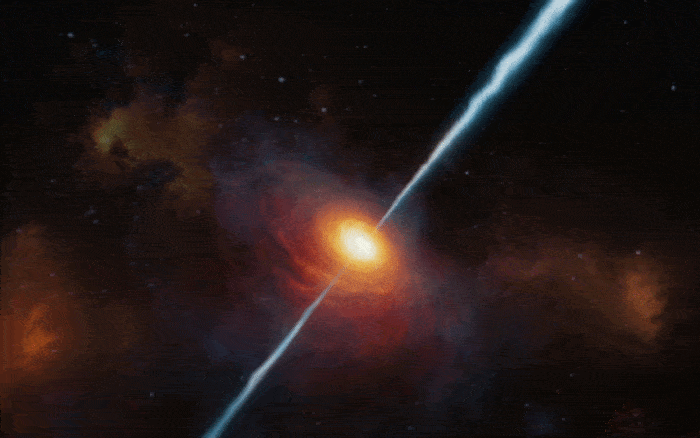Astronomers Discover the Brightest Known Object in the Universe, Shining 500 Trillion Times as Bright as the Sun
Key takeaways:
- Astronomers have found the brightest known quasar, J059-4351, located 12 billion light-years away, outshining our sun by 500 trillion times.
- The quasar’s supermassive black hole is consuming a sun’s-worth of mass daily, making it the fastest growing black hole ever observed.
- Although previously mistaken for a star, the quasar was rediscovered in 2022 using telescopes in Australia and Chile.
- The quasar’s intense brightness comes from friction in the accretion disc, which spans 15,000 times the distance between the sun and Neptune.
- Given the universe’s current state, researchers believe this quasar will likely remain the brightest object ever discovered.
_________________

Astronomers have discovered the brightest object in the universe: a quasar located 12 billion light-years away. Quasars are extremely luminous objects powered by supermassive black holes at their centers, and this one has shattered records. The light emitted by the quasar is 500 trillion times brighter than the Sun, according to a report published in Nature Astronomy.
A Growing Black Hole Consuming Mass at Record Speed
The quasar, named J059-4351, contains a supermassive black hole growing at an astonishing rate, devouring more than a sun’s-worth of mass every day. The European Space Agency (ESA) describes this black hole as the fastest-growing one known to science. This immense object spans about seven light-years across and creates a dazzling display of energy as it swallows surrounding gas and dust. The friction from this process causes the accretion disc, which stretches 15,000 times the distance between the Sun and Neptune, to heat up and glow.
Lead researcher Christian Wolf, from Australian National University, called the quasar “the most violent place that we know in the universe.” The brightness and the scale of this cosmic phenomenon are unprecedented, and its discovery has stunned the astronomical community. Co-author Christopher Onken expressed surprise that such an extraordinary quasar remained undetected for so long, despite astronomers having previously identified a million less-luminous quasars.
Hiding in Plain Sight: Misidentified as a Star
Researchers first unknowingly spotted this quasar back in 1980 through images taken by the Schmidt Southern Sky Survey. At that time, astronomers mistook it for a star. The error occurred because machine-learning algorithms typically scan for objects resembling previously known quasars, which made detecting this particularly bright one more difficult.
It wasn’t until last year that researchers correctly identified it as a quasar, using data from the Siding Spring Observatory in Australia. They later confirmed its extraordinary brightness with observations from the Very Large Telescope in Chile. Priyamvada Natarajan, an astrophysicist at Yale University, commented that the quasar had been “hiding in plain sight.”
Unimaginable Energy and a Window Into the Early Universe
The quasar’s black hole is estimated to weigh 17 billion times the mass of the Sun and consumes material equivalent to 413 suns each year. The heat generated by this process is intense—temperatures within the quasar reach around 10,000 degrees Celsius, accompanied by powerful winds. The quasar’s light took roughly 12 billion years to reach Earth, meaning we are seeing it as it appeared in the early universe.
Scientists are now hopeful that the quasar’s vast accretion disc will enable them to measure its black hole’s mass more precisely, potentially offering new insights into the growth of black holes in the early cosmos. According to Christine Done, a physicist studying black holes, current instruments might allow researchers to directly measure the mass of this “monster” black hole.
Though the quasar’s black hole likely stopped growing billions of years ago, its discovery marks a significant breakthrough in understanding the universe’s brightest and most energetic objects. Wolf speculates that nothing will top this quasar in terms of brightness—making this a once-in-a-lifetime discovery.




